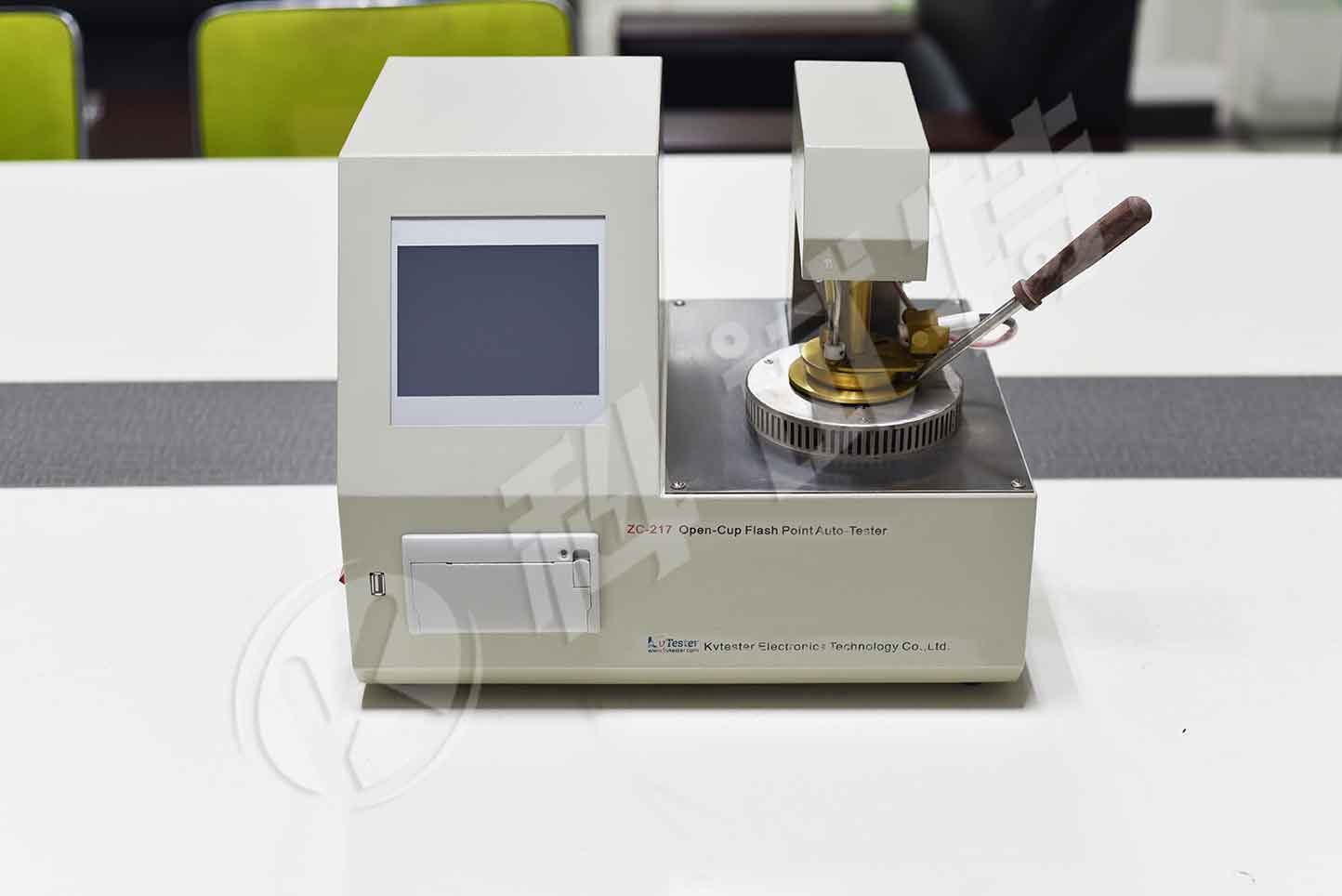The fully automatic open flash point tester is designed and manufactured in accordance with the provisions of GB267-88 and GB3536-83 methods for determining open flash points. It is suitable for determining the open flash point of petroleum products, except for fuel oil, and petroleum products with an open flash point below 79 ℃, using the method specified in this standard. The instrument has automatic temperature control. Automatic ignition scanning, automatic flash point locking results, and automatic printing of results. Automatically turn off the gas source. This instrument has the advantages of accurate measurement, good repeatability, stable performance, and simple operation. Widely used in departments such as electricity, petroleum, commodity inspection, and scientific research.
Attention should be paid when using:
1. It is forbidden to forcefully move or place the instrument lifting arm by hand, otherwise it will damage the lifting arm machinery.
2. If the instrument is placed in a fume hood, the fume hood fan should not be turned on during sample preparation, as turning on the fan can cause unnatural steam flow in the sample, resulting in inaccurate test results.
Analysis of Some Common Malfunctions of Fully Automatic Open Flash Point Tester:
1. If there is a beeping alarm during the start-up or experimental process of the instrument, it indicates that the detection ring is short circuited. The test should be stopped or shut down immediately and the detection ring should be checked to observe whether the detection ring is connected together due to looseness or if it is connected in series by filamentous fibers or oil stains, causing a short circuit in the detection ring. (Solution: If the short circuit is caused by parallel connection of the detection ring, separate the detection ring. If the short circuit is difficult to handle due to looseness of the detection ring, contact the after-sales service personnel. This phenomenon rarely occurs.). After each sample, gently wipe the detection ring clean with a lint free cloth or paper dipped in petroleum ether or gasoline to avoid short circuits caused by the connection of filamentous fibers or oil stains on the detection ring.
2. When the instrument was first ignited for sample making, the lifting arm lifted its head and no flashing phenomenon was observed in the sample, indicating that it was caused by a short circuit in the detection ring.
3. When the instrument is used for sample preparation, if the lifting arm lifts its head and a flash fire is observed on the sample during the first ignition, it indicates that the preset temperature is too high. Simply lower the preset temperature and retest.
4. The high error in instrument testing may be caused by insufficient brightness (heat) of the ignition wire, as a layer of smoke impurities or some impurities in the sample vapor may adhere to the ignition wire after long-term sampling (depending on the degree of adhesion of the sample). Therefore, it is necessary to soak the ignition wire in carbon tetrachloride solution for one night or replace it directly.
5. The sample catching fire due to missed detection of the detection ring is caused by the detection ring not being cleaned regularly, which leads to a layer of oil and impurities adhering to the detection ring and affects the detection accuracy of the detection ring. When making the sample catching fire, do not be nervous and immediately turn off and restart the instrument. The instrument lifting arm will automatically lift up, take out the oil cup, and extinguish the fire (use a high-temperature resistant and flame-retardant material cover to extinguish the flame).
6. If the ignition wire does not light up, check the ignition wire circuit, check if the ignition wire is broken, and check if the ignition wire is loose. If the ignition wire is loose and has poor contact, use a small screwdriver to tighten the two small screws of the ignition head. If the above operations do not work, the ignition wire needs to be replaced, indicating that the ignition wire's lifespan has been exhausted.
7. The deviation between the instrument's displayed ambient temperature and the calibrated thermometer may be due to the temperature sensor not being cleaned properly. After completing the sample, the temperature sensor should be cleaned with petroleum ether or gasoline.

The ZC-217 fully automatic open flash point tester uses a touch screen instead of a keyboard for operation. Used to determine the open flash point value of petroleum products. Adopting advanced technology from abroad, the LCD large screen displays a human-machine dialogue interface in full Chinese, with full screen touch button prompts for input, which is convenient and fast. The open and fuzzy control integrated software has a modular structure that complies with national standards, the United States, the European Union, and other standards. It is an ideal substitute for imported instruments. Widely used in industries such as railways, aviation, electricity, petroleum, and scientific research departments.
Kvtester Electronics Technology Co.,Ltd. is a high-tech enterprise specializing in power testing, testing, research and development, production, and sales of testing equipment. It has been engaged in the electrical testing industry for many years, and its products are of high quality. We welcome customers to come and purchase. Service hotline: 0086-27-81778799, to learn more, visit the official website: www.kvtester.com





